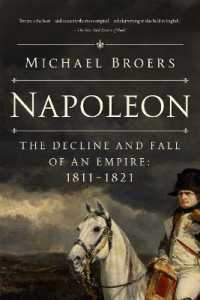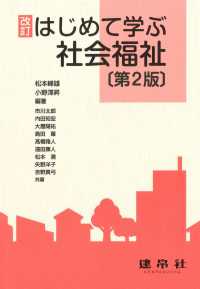- ホーム
- > 洋書
- > 英文書
- > Literary Criticism
Full Description
If you read a work by Cicero or Seneca and then open The Pilgrimage of Egeria, Augustine, or Gregory of Tours, you will soon notice that Late Latin authors quote authorities differently. They provide a perfect example of synthesising two potentially conflicting traditions - "classical" and "biblical". This book examines how the system of direct discourse marking developed over the centuries. It focuses on selecting marking means, presents the dynamics of change and suggests factors that might have been at play. The author guides the reader on the path that goes from the Classical prevalence of inquit to the Late innovative mix of marking words including the very classical inquit, an increased use of dico, the newly recruited ait, and dicens, influenced by biblical translations. The book suggests that Late authors tried to make reading and understanding easier by putting quotative words before quotations and increasing the use of redundant combinations (e.g. "he answered saying").
Contents
List of Figures and Tables
Acknowledgements
1 Introduction
1.1 Corpus of Examined Texts
1.2 Data Set for the Analysis
2 Theoretical Preliminaries
2.1 Direct Discourse
2.2 Structures Similar to Direct Discourse
2.3 Direct Discourse Markers
2.4 Grammaticalization: How New Quotative Markers Arise
3 The Marking of Direct Discourse in the Examined Texts
3.1 Verbal Markers
3.2 Non-verbal Markers
3.3 Zero Markers
3.4 Multiple Marking and Redundancy
4 Discussion
4.1 Overview of the Use and Characteristics of Direct Discourse Markers
4.2 Factors in Use and Development
4.3 Grammaticalization
5 Conclusions
References
Index Locorum








